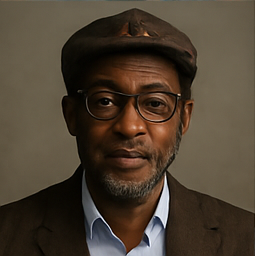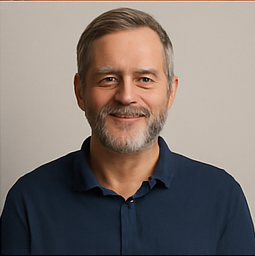Ancient DNA Discoveries in Colombia Challenge Understanding of Human Migration

In a groundbreaking discovery, archaeologists in Colombia have unearthed 6,000-year-old skeletons that may belong to an enigmatic group of hunter-gatherers, potentially reshaping the narrative of human history in the Americas. This remarkable find was made at the ancient preceramic archaeological site of Checua, located in the Bogotá Altiplano, where the remains of these individuals were excavated.
The DNA analysis conducted on the skeletons has revealed that these ancient peoples do not share genetic ties with any recognized Indigenous populations in the region today. Instead, they exhibit a distinct genetic lineage that traces back to some of the earliest humans who migrated to South America. This lineage diverged early in human history and remained genetically isolated for thousands of years, which makes this discovery particularly significant.
Researchers embarked on a meticulous analysis that involved extracting ancient DNA from 21 individuals who lived in the Bogotá Altiplano area over a span of nearly 6,000 years, from 6,000 to 500 years ago. By piecing together genetic data, they were able to create a rare timeline that sheds light on the region's demographic history. The oldest individuals buried at Checua exhibited a unique ancestral genetic signature that is now extinct, illustrating a complete disappearance from the overall gene pool.
Kim-Louise Krettek, the lead author of this study and a Ph.D. student at the Senckenberg Center for Human Evolution in Germany, expressed the importance of this discovery. She stated, 'This area is key to understanding how the Americas were populated,' emphasizing that the Bogotá region served as a land bridge between North and South America and was a convergence point for three major cultural areas: Mesoamerica, Amazonia, and the Andes.
Upon further investigation, it became clear that the genetic makeup of these early inhabitants was distinct from other ancient groups across South America, such as those in Chile or Brazil. They also lacked any ancestral connections to early North American populations, including those from California’s Channel Islands. This finding significantly enriches our understanding of the Isthmo-Colombian area, known as a cultural and genetic transition zone that stretches from Honduras through Panama and into northern Colombia.
'Our findings indicate that the Checua individuals are derived from the earliest inhabitants who spread and diversified across South America in a remarkably rapid manner,' Krettek elaborated. 'We found no descendants of these early hunter-gatherers from the Colombian high plains. Their genetic lineage did not persist, suggesting a complete population exchange in the Bogotá region.'
Approximately 2,000 years ago, a drastic transformation occurred in the genetic landscape of the Bogotá highlands. The unique lineage initially identified in the Checua remains vanished, supplanted by new genetic material closely related to ancient Panamanians and modern Chibchan-speaking groups from Costa Rica and Panama. Andrea Casas-Vargas, a co-author and researcher at Universidad Nacional de Colombia, indicated that genetic evidence points to the arrival of migrants from Central America who brought new cultural practices and technologies, including ceramics and the Chibchan languages.
Casas-Vargas further noted, 'Branches of the Chibchan language family are still spoken in Central America today.' The complete disappearance of the original population's genetic markers is particularly unusual in South America, where long-term genetic continuity has typically been observed amidst cultural changes.
These new arrivals not only introduced the Herrera tradition, recognized for its pottery and early agricultural practices, but also laid the groundwork for the Muisca civilization, which thrived in the region until the Spanish conquest in the 16th century. Notably, the transition in populations did not appear to be associated with violence or warfare; archaeologists found no signs of conflict at the site. Instead, this demographic shift likely occurred gradually through migration, cultural interchange, and intermarriage, leading to the dilution and eventual erasure of the Checua people’s unique genetic identity.
To trace ancestry effectively, scientists analyzed both maternal DNA and broader genetic markers. While the males from Checua carried a common Native American Y-DNA signature (Q1b1a), the rest of their genetic profile exhibited signs of deep isolation, showing no connections to subsequent populations. Over time, the later inhabitants of the Bogotá plateau demonstrated stronger genetic ties to both Venezuela and Central America, indicating that the region became part of a more extensive network across northern South America.
Despite the survival of Chibchan languages in areas like Costa Rica, Panama, and northern Colombia today, it is essential to highlight that contemporary Indigenous Colombians do not descend directly from the Checua or even the early Chibchan-linked Herrera peoples. Professor Cosimo Posth emphasized the importance of distinguishing between genetics and culture, stating, 'Questions regarding history and origins touch upon sensitive areas related to the self-perception and identity of Indigenous populations. The genetic disposition must not be equated with cultural identity.'
In a move towards inclusivity, the research team engaged with the Guardia Indígena Muisca, the living descendants of the Muisca culture that thrived in the Bogotá highlands, ensuring that community-based knowledge was respected and incorporated into their findings. 'As scientists addressing questions pertinent to Indigenous communities in Colombia, we respect and value the wealth of community-based knowledge,' he added.
This research signifies Colombia's first venture into ancient DNA studies, and scientists are optimistic that this is only the beginning. Many adjacent regions, such as western Colombia, Venezuela, and Ecuador, remain unexplored genetically, potentially harboring more insights into the migratory waves that helped shape the continent. 'Ancient DNA from those areas will be critical to understanding how humans migrated into South America,' Krettek concluded, highlighting the vast potential for future research.




























